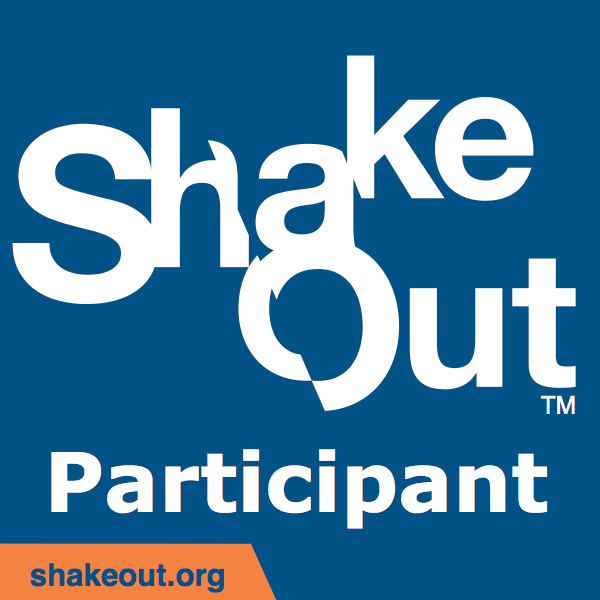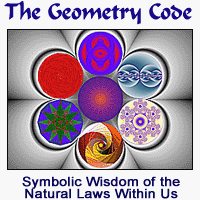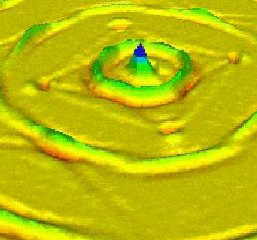All the Numbers for the Fourth—Maybe a Few Special Ones?
ALL THE NUMBERS FOR THE FOURTH
Monthly Corner Hideaway for Insecure Writers—and others

Royal Bedchamber has not changed much since Domesday 11thC England, courtesy HM The Queen
Dunbar’s famous prediction achieved by correlation of his extrapolation curve to the size of the human brain, stated that humans could have no more than about 150 people in their social sphere.
Recent research has since found more evidence for Dunbar’s Number, from the size of hunter-gatherer societies, Roman legions—130-145—to effective modern businesses.
Dunbar’s Number—backed by recent internet/iCloud/social media statistics is even more apt for modern exchange via social networks, where we humans gravitate to a natural limit of meaningful relationships we can sustain—around 150.
Dunbar is Director of the Institute of Cognitive and Evolutionary Anthropology—the study of how we evolved as modern humans—at the University of Oxford and author of How Many Friends Does One Person Need? (Faber). His research has gone on to find ‘Dunbar layers’, from family intimacy—five—outward to once-a-year contact with the acquaintance layer—beyond 150.
Social Behavior Rooted in Human Biology and Layers in the Digital Age

Mediaeval Warrington & Cheshire villages, on banks of River Mersey, map courtesy John Speed
This is the number of people you can have a relationship with involving trust, obligation—and usually—some personal history.
That’s the Dunbar number.
In updated research in the digital age, other patterns emerge for the average human—most people have a small group of three to five very close friends. Various layers of friendship – which increase in number but decrease in intimacy and frequency of contact are on average:
Dunbar Layers
Layer 0. Nucleus/very close friends—those you turn to in a crisis, ask for money, lean on for support—on average 3 to 5 people. Likely keep in touch once a week.
Layer 1. Close friends/sympathy group—12-15 people (number of Apostles, members on a jury). Contact once a month.
Layer 2. Distant friends—45 to 50 people
Layer 3. Maximum number of friends/acquaintances: 150 people (Dunbar’s Number)
Layer 4. 500 people
Layer 5. 1500 people
Layer 6. Plato’s ideal size for a democracy—5300 people

Answer to Life, the Universe and Everything… number according to Douglas Adams
“I was working on the arcane question of why primates spend so much time grooming one another, and I tested another hypothesis–which says the reason why primates have big brains is because they live in complex social worlds.
“Because grooming is social, all these things ought to map together, so I started plotting brain size and group size and grooming time against one another. You get a nice set of relationships.
“It was about 3a.m., and I thought, hmm, what happens if you plug humans into this? And you get this number of 150. This looked implausibly small, given that we all live in cities now, but it turned out that this was the size of a typical community in hunter-gatherer societies.
“And the average village size in the Domesday Book is 150.”
Robin Dunbar
“It’s the same when we have much better data–in the 18th century, for example, thanks to parish registers. County by county, the average size of a village is again 150. Except in Kent, where it was 100. I’ve no idea why.”
The number evolved as tribal societies did. Dunbar believes his Number probably dates back to the appearance of anatomically modern humans, 250,000 years ago, from Australopithicus to Neanderthal. Prior to that, by estimated brain size, community size declined steadily.
A key evolutionary adaptation of primates facing survival out there on the plains and in the forests was group living within a hierarchy, with explicitly communal solutions to living as a unit—an ape strategy, evolved very early in the timeline.
Most species of birds and animals are not as intensely social. Socialability for them hovers around pair-bonds, which is as complicated as it gets. But the species with big brains mate monogamously.
Has the Dunbar Number Increased with the Internet?
“We’re caught in a bind: community sizes were designed for hunter-gatherer societies where people weren’t living on top of one another. Your 150 were scattered over a wide area, but everybody shared the same 150. This made for a very densely interconnected community, and it also means the community polices itself.
“You don’t need lawyers and policemen. If you step out of line, Grannie will wag her finger at you.”
Rôle of the Internet, Smart Devices, & BFFs in the (Wired) Generational Divide
Can we extend deep relationships beyond the old numbers?

Magdalen College Oxford Prof. Robin Dunbar
Current statistics compiled by consumer research specialist, Paul Hudson point to a generational divide—younger teenagers aged thirteen to sixteen–the fastest-growing social media generation—have an average of 450 social network “friends”.
Figures rapidly reduce between decades—people in their thirties have on average between one and two hundred friends; those in their forties between fifty and 100; and over-fifties—if they are internet-savvy—form the lowest stat-curve, the majority having fewer than twenty friends.
Seventeen Hugs a Day—the Touchie, Feelie Solution
Dunbar stands by his ‘grooming’ theory: that we actually have to get together to make a relationship work. Tablets, iPads and smartphones still haven’t figured out how to do virtual touch, which humans rely heavily on—the ape hug, the elephant caress, lioness’s kiss, dolphin’s smooch.
In a widening social network, intimacy becomes more important—and apparently less available, considering the number of dogs in the United States equals the human population! That, my dear Virtual Cap’n and fellow Insecure Writers, must hold for another day.
One hopeful statistic: Writers—as we IWSG-ers all know—are mostly introvert, so we keep our BFFs forever!
Words are slippery. A touch is worth a thousand words—always.
©2018 Marian Youngblood
July 4, 2018 Posted by siderealview | ancient rites, art, authors, belief, blogging, culture, Doomsday, fiction, history, publishing, traditions, writing | 150, australopithicus, brain size, digital age, Domesday Book, Dunbar number, evolutionary, Five BFFs, grooming, hunter-gatherer, Insecure Writers, internet, internet-savvy, IWSG, Magna Carta, memory, primates, Robin Dunbar, Royal bedchamber, social layers, University of Oxford, virtual touch | Leave a comment
About
Lots of writers use a nom de plume to distinguish between their personae – it’s the way publishing works. Blogs, too. What choice, what abundance: we can be guided by all our Muses and still retain our integrity (who doubts it?)if we are prone to take one persona more seriously than another. For this blog I become this particular blogger because the material is time-sensitive; the research is all coming together now and our way forward is mapped. That said, it’s up to us whether we take the information and run with it.
Top Posts
- March In Like a Lamb,Out Like a Lion:Does Ancient Rhyme Predict More Climate Crises or Solutions?
- February Packed Full of Festivals Both Ancient & Modern—an Unholy Cultural Mix North and South of Equator
- Stepping Ahead into 1st Quarter of 21stCentury While Looking Back to the Goode Olde Days
- Sun's Coronal Hole-Combo-Climate Crisis Make for "Interrresting" December Human Conditions +Airliner Surprise
- November Remembered for 'Gunpowder, Treason & Plot':420yrs Later Have We Learned Anything?
- Warmest Year on Record: 2023 "October—All Over"? No Chance as Angels Are With Us
- September-Remember: As Autumn Hits, Human Tragedies are Hard to Forget but Human Kindness Wins
- Lammastide/Lughnasadh LightFest, Lionsgate, Two Full Moons in August +Tropical Cyclones & Hurricanes
- Fireworks in U.S.,Tropical Cyclones, as Brits swim into their Summer Hols thru Torrential Rain
- Atlantic Hurricane Season Echoes Pacific Cyclone in GUAM/MARIANA Is. Heralding Earth's Hottest Summer Yet
YoungbloodBlog Stats
- 117,018 hits
-
Latest posts
- March In Like a Lamb,Out Like a Lion:Does Ancient Rhyme Predict More Climate Crises or Solutions?
- February Packed Full of Festivals Both Ancient & Modern—an Unholy Cultural Mix North and South of Equator
- Stepping Ahead into 1st Quarter of 21stCentury While Looking Back to the Goode Olde Days
- Sun’s Coronal Hole-Combo-Climate Crisis Make for “Interrresting” December Human Conditions +Airliner Surprise
- November Remembered for ‘Gunpowder, Treason & Plot’:420yrs Later Have We Learned Anything?
RSS Feed
astro
Youngblood BlogArchives
- March 2024
- February 2024
- January 2024
- December 2023
- November 2023
- October 2023
- September 2023
- August 2023
- July 2023
- June 2023
- May 2023
- April 2023
- March 2023
- February 2023
- January 2023
- September 2022
- August 2022
- July 2022
- June 2022
- May 2022
- April 2022
- March 2022
- February 2022
- January 2022
- December 2021
- November 2021
- October 2021
- September 2021
- August 2021
- July 2021
- June 2021
- May 2021
- April 2021
- March 2021
- February 2021
- January 2021
- December 2020
- November 2020
- October 2020
- September 2020
- August 2020
- July 2020
- June 2020
- May 2020
- April 2020
- March 2020
- February 2020
- January 2020
- December 2019
- November 2019
- October 2019
- September 2019
- August 2019
- July 2019
- June 2019
- May 2019
- April 2019
- March 2019
- February 2019
- January 2019
- December 2018
- November 2018
- October 2018
- September 2018
- August 2018
- July 2018
- June 2018
- May 2018
- April 2018
- February 2018
- January 2018
- December 2017
- November 2017
- October 2017
- September 2017
- August 2017
- March 2017
- February 2017
- January 2017
- December 2016
- November 2016
- October 2016
- September 2016
- August 2016
- July 2016
- June 2016
- May 2016
- April 2016
- March 2016
- February 2016
- January 2016
- December 2015
- November 2015
- October 2015
- August 2015
- July 2015
- June 2015
- May 2015
- April 2015
- March 2015
- February 2015
- January 2015
- December 2014
- November 2014
- September 2014
- June 2014
- March 2014
- February 2014
- January 2014
- November 2013
- October 2013
- September 2013
- August 2013
- July 2013
- June 2013
- May 2013
- April 2013
- March 2013
- February 2013
- January 2013
- December 2012
- November 2012
- October 2012
- September 2012
- August 2012
- July 2012
- June 2012
- May 2012
- April 2012
- March 2012
- February 2012
- January 2012
- December 2011
- November 2011
- October 2011
- September 2011
- August 2011
- July 2011
- June 2011
- May 2011
- April 2011
- March 2011
- February 2011
- January 2011
- December 2010
- November 2010
- October 2010
- September 2010
- August 2010
- July 2010
- June 2010
- May 2010
- April 2010
- March 2010
- February 2010
- January 2010
- December 2009
- November 2009
- October 2009
- September 2009
- August 2009
 The Stellar Perspective
The Stellar Perspective- Oriental Year of Dragon 2024 & Lunar New Year Zodiac
- Early Saints & Religious Houses in Scotland with Placenames derived from Pictish/Brittonic/Celtic
- U.S. Memorial Day Means Different Strokes for Different Folks
- Hokole’a Hawai’ian-built Canoe to Circumnavigate Pacific— 47,000 Miles over Next Four Years
- Time to Tempt Humans to Act like Telosians—Delving Deep Within to Discover our Origins As Star-People
- Canticle for a lost Nation—Pictish Roots Surface in Stone, Royal Forests & Names
- The Janus Effect—Riding into the New on an Old Horse
- Boudicca: Great Queen of the Iceni
- 2020 Backward Take on 2012: Stargate Portal to Final Quarter
- Volcanic Surprise: Take your Toys and Go Home
Youngbloodblog calendar of posts
July 2018 M T W T F S S 1 2 3 4 5 6 7 8 9 10 11 12 13 14 15 16 17 18 19 20 21 22 23 24 25 26 27 28 29 30 31 Solar & Geomagnetic field indicator (NOAA)
From n3kl.orgSolar X-rays:
Geomagnetic Field:

Meta
 Derilea’s Dream: Pictish essentials
Derilea’s Dream: Pictish essentials- The Glory that Was Sail
- Guest Blog from the Granite Past to a Future Historian
- Boudicca: Great Queen of the Iceni
- The Sueno’s Stone Cover-up
- Maiden Stone of Bennachie
- Bibliography: The Church in Pictland
- Warlord centres of Pictland:glimpses into a lost history
- Gaels progress through Pictland via the Church
- Hello world!
Shakeout prepared

Related Pages
Picosecond Pulse Ripples Gold on Glass
Recent Comments
Marian’s SHASTA:Critical Mass

bumpy ride ahead

‘Phantom’s Child’

Nano 2011 win

Weblog Pages
SHASTA: backstory

-
Join 605 other subscribers
Circlemakers
Enchantment
Blackbird pie tweets
Tweets by siderealviewShakeOut preparedness
Bourtie Kirk: 800 Years

Geometry code

Cloud of Thought
Aberdeenshire agents Alex Cavanaugh Alex J Cavanaugh Amazon astrology Aurora Borealis autumn Baby Boomers Bahamas blogging bloghop Buchan Burning Man Caledonian Forest Caledonian Pine calendar candlemas consciousness crop circles deadline Deeside earthquake Easter eclipse equinox fiction fire festival fireworks Forteviot full moon Glorious Twelfth Grand Cross Green Turtle Cay Groundhog Day Hawaii Hogmanay humpback whale Iceland iGen Insecure Writers Insecure Writers Support Group IWSG Jupiter Klamath River lammas light Mardi Gras Mars Mercury moon Moray Moray Firth Muse NaNoWriMo Neptune new moon novel ocean Pisces rewilding Rome Saturn sci-fi Scotland Scots Pine snow solstice Uranus Venus volcano weather WIP writing Yurok Devorguilablog: view from Pictish Citadel
Devorguilablog: view from Pictish Citadel- Pictish Power Centre discovered at Rhynie: stronghold in Aberdeenshire heartland
- Black Glen Cailleach/Bodach Stones threatened
- PICTISH KINGLISTS and the PICTISH CHRONICLE
- Nechtan’s Pictish Nation: 8thC Strongholds of the new religion
- Pictish inheritance in an ancient land
- Canticle for a lost Nation
- Canticle III: Nechtan of Derley
- Devorguila’s lineage: where did it go?
cosmic consciousness

Archives
- March 2024 (1)
- February 2024 (1)
- January 2024 (1)
- December 2023 (1)
- November 2023 (1)
- October 2023 (1)
- September 2023 (1)
- August 2023 (1)
- July 2023 (1)
- June 2023 (1)
- May 2023 (1)
- April 2023 (1)
- March 2023 (1)
- February 2023 (1)
- January 2023 (1)
- September 2022 (1)
- August 2022 (1)
- July 2022 (1)
- June 2022 (1)
- May 2022 (1)
- April 2022 (1)
- March 2022 (1)
- February 2022 (1)
- January 2022 (1)
- December 2021 (1)
- November 2021 (1)
- October 2021 (1)
- September 2021 (1)
- August 2021 (1)
- July 2021 (1)
- June 2021 (1)
- May 2021 (1)
- April 2021 (1)
- March 2021 (1)
- February 2021 (1)
- January 2021 (2)
- December 2020 (1)
- November 2020 (1)
- October 2020 (1)
- September 2020 (1)
- August 2020 (1)
- July 2020 (1)
- June 2020 (1)
- May 2020 (1)
- April 2020 (1)
- March 2020 (1)
- February 2020 (1)
- January 2020 (1)
- December 2019 (1)
- November 2019 (1)
- October 2019 (1)
- September 2019 (1)
- August 2019 (1)
- July 2019 (1)
- June 2019 (1)
- May 2019 (1)
- April 2019 (1)
- March 2019 (1)
- February 2019 (2)
- January 2019 (1)
- December 2018 (1)
- November 2018 (1)
- October 2018 (2)
- September 2018 (1)
- August 2018 (1)
- July 2018 (1)
- June 2018 (1)
- May 2018 (1)
- April 2018 (1)
- February 2018 (1)
- January 2018 (1)
- December 2017 (2)
- November 2017 (1)
- October 2017 (1)
- September 2017 (1)
- August 2017 (1)
- March 2017 (1)
- February 2017 (1)
- January 2017 (1)
- December 2016 (1)
- November 2016 (1)
- October 2016 (1)
- September 2016 (1)
- August 2016 (1)
- July 2016 (1)
- June 2016 (1)
- May 2016 (1)
- April 2016 (1)
- March 2016 (1)
- February 2016 (1)
- January 2016 (1)
- December 2015 (1)
- November 2015 (1)
- October 2015 (1)
- August 2015 (1)
- July 2015 (1)
- June 2015 (1)
- May 2015 (1)
- April 2015 (2)
- March 2015 (1)
- February 2015 (1)
- January 2015 (1)
- December 2014 (1)
- November 2014 (1)
- September 2014 (1)
- June 2014 (1)
- March 2014 (1)
- February 2014 (1)
- January 2014 (1)
- November 2013 (2)
- October 2013 (1)
- September 2013 (1)
- August 2013 (1)
- July 2013 (1)
- June 2013 (1)
- May 2013 (1)
- April 2013 (1)
- March 2013 (1)
- February 2013 (1)
- January 2013 (1)
- December 2012 (1)
- November 2012 (1)
- October 2012 (1)
- September 2012 (1)
- August 2012 (2)
- July 2012 (1)
- June 2012 (2)
- May 2012 (1)
- April 2012 (2)
- March 2012 (2)
- February 2012 (3)
- January 2012 (1)
- December 2011 (2)
- November 2011 (1)
- October 2011 (1)
- September 2011 (1)
- August 2011 (1)
- July 2011 (1)
- June 2011 (2)
- May 2011 (1)
- April 2011 (2)
- March 2011 (2)
- February 2011 (1)
- January 2011 (1)
- December 2010 (1)
- November 2010 (2)
- October 2010 (2)
- September 2010 (3)
- August 2010 (1)
- July 2010 (1)
- June 2010 (1)
- May 2010 (3)
- April 2010 (3)
- March 2010 (3)
- February 2010 (2)
- January 2010 (1)
- December 2009 (5)
- November 2009 (5)
- October 2009 (2)
- September 2009 (3)
- August 2009 (3)
Youngblood issues
- ancient rites (71)
- art (55)
- Ascension (23)
- astrology (54)
- astronomy (48)
- authors (141)
- autumn (2)
- belief (50)
- birds (25)
- blogging (122)
- calendar customs (71)
- consciousness (47)
- crop circles (18)
- crystalline (11)
- culture (143)
- Doomsday (3)
- earth changes (42)
- elemental (8)
- energy (33)
- environment (76)
- fantasy (33)
- festivals (64)
- fiction (87)
- gardening (24)
- history (76)
- Muse (55)
- music (11)
- nature (72)
- New Age (17)
- New Earth (35)
- novel (58)
- numerology (4)
- ocean (28)
- organic husbandry (22)
- poetry (2)
- popular (38)
- pre-Christian (34)
- Prehistory (22)
- publishing (88)
- rain (21)
- ritual (44)
- sacred geometry (7)
- sacred sites (39)
- seasonal (71)
- seismic (18)
- snow (1)
- space (5)
- spiritual (20)
- stone circles (13)
- summer (5)
- sun (30)
- traditions (60)
- trees (25)
- Uncategorized (9)
- volcanic (19)
- weather (52)
- winter (25)
- writing (138)




